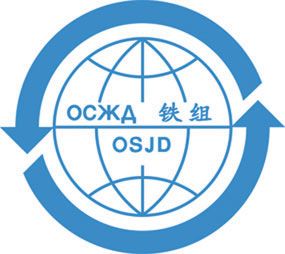News of the Russian Railways (according to the press service of the RZD)



According to the agreement, the “RZD International” LLC (a subsidiary of the RZD OJSC), in partnership with one of the Russian design institutes, will provide technical consulting services for the implementation of the railway construction project of the line Tavan-Tolgoi - Zuunbayan, as well as develop recommendations regarding the construction organisation and the traffic organisation diagram for the movement of trains along the line with a total length of 414 km.
The new railway line will be connected to the central railway line of “Ulan-Bator Railway” JSC. This will open up new possibilities for transporting coking coal from Tavan-Tolgoi, a large coal deposit in southern Mongolia. The term of the contract is 12 months.
The first container train from China to Europe in multimodal traffic
The first container train from China to Europe, dispatched under the application of the unified carriage document in multimodal traffic, arrived at the port of Baltiysk on 11 November 2019.
The RZD OJSC together with the UTLC ERA JSC (OSJD affiliated enterprise) and the Port of Mukran (Germany) have launched a new multimodal project for the delivery of goods under the unified CIM/SMGS consignment note as part of container trains in China-Europe-China communication.
The first test train followed the route Xian - Kaliningrad - Hamburg. It consisted of 42 forty- foot containers (84 TEUs) with consumer goods, automobile parts and computer equipment.
On the same day, 11 November, at the container terminal in Baltiysk, containers were transloaded from 1520-mm gauge flat wagons onto the feeder vessels that delivered goods to Germany - to the Mukran/Sassnitz railway port terminal, where they were transloaded onto the 1435-mm gauge wagons and sent to their destination - to the station of Mannheim.
For the first time, a train from China to Europe using the unified CIM/SMGS consignment note throughout the entire route proceeded in 2012, and this time this transportation was organised using two modes of transport along the railway sea route of the New Silk Road. The use of the unified CIM/SMGS consignment note eliminates the need to rewrite carriage documents when crossing the borders at the intersection of various transport law systems, which helps to eliminate possible errors, reduce the delivery time of goods and lower the transportation costs.
“The key advantage of the CIM/SMGS consignment note is that there is no need to rewrite the carriage document when crossing the borders between one transport law to another (for example, from the SMGS law to the CIM law when transporting goods from China to Europe),” said Deputy Director of the Client Relations Department of UTLC ERA JSC Denis Smygalin. “The use of a unified consignment note eliminates the costs associated with rewriting the documents. Ultimately, without documents being rewritten, the time of transportation is also reduced.”
“A multimodal route has now been added to the land route through the Dzerzhinskaya-Novaya station of Kaliningrad Railway: a container train traveled over 10 thousand km along a 1520-mm gauge track in 8.5 days, covering more than 1000 km per day, while the average speed in Europe along the 1435-mm gauge track will be about 90 km per day,” said Ivan Besedin, head of the Kaliningrad Territorial Center for Corporate Transport Services.
The RZD Holding organised the first transit container shipment from Europe to Japan via Russia (according to the information as of 2 December 2019)
The “RZD Logistics” JSC (a subsidiary of the RZD OJSC), as part of the “Trans-Siberian LandBridge” fast transit delivery service, organised successfully the transportation of the first transit container from Europe to Japan via the territory of the Russian Federation.
A 40-foot test container loaded with various groupage cargoes departed from Hamburg (Germany) to the port of Yokohama (Japan). The transportation client was Nippon Express Co., Ltd - one of the largest forwarding companies in Japan.
The goods were carried along the route Poland - Belarus (border crossing point of Malaszewicze/Brest) - Russia (to Vladivostok), from where the container was transported by sea to the destination. The cargo was enroute for 22 days.
The container was equipped with temperature, humidity and vibration sensors, so that the customer could be convinced of the safety and quality of the goods transported along the Trans-Siberian Railway. In addition, throughout the entire travelling route the customer was provided daily with detailed information about the location of the goods.
“The first test large-capacity container to the port of Yokohama demonstrated to the Japanese customer that this multimodal route is not only more than twice as fast as shipping by sea, but also guarantees the safety of cargo throughout the entire transportation period,” said Director General of the “RZD Logistics” JSC Vyacheslav Valentik.
The “Trans-Siberian LandBridge” is a new multimodal transit service for the accelerated delivery of goods in containers from Japan to Europe and back through the ports of the Far East and the Trans-Siberian Railway Line. The service can significantly reduce the time of transportation of goods in comparison with the traditional sea routes or transit routes via China. The Trans-Siberian LandBridge is the main tool for implementing the agreement between the Ministry of Transport of the Russian Federation, RZD OJSC, Ministry of Land, Infrastructure, Transport and Tourism of Japan and the Association of Trans-Siberian Intermodal Operators of Japan on the organisation of container traffic using the railway mode of transport in the Japan- Russia-Europe service.
RZD OJSC and CargoBeamer JSC signed a memorandum of cooperation
On 29 October, Deputy General Director of the RZD OJSC, Head of the Center for Corporate Transport Services Alexey Shilo and Member of the Board of the CargoBeamer JSC Markus Fischer signed a memorandum of cooperation in Sochi within the framework of the “PRO//Motion.1520” International Railway Forum. The memorandum is aimed to develop jointly the services in freight railway traffic in the direction of Europe - China passing transit through the territory of the Russian Federation and to create new logistics products in the territory of Russia using the CargoBeamer technology (for more details see OSJD Bulletin No. 1-2019, p. 26).
The CargoBeamer system is designed for contrailer traffic and provides for saving the costs and reducing significantly the transportation time thanks to the automated loading and unloading processes. It also ensures the safe transportation of automobile freight trailers by rail through the use of special flat wagons and transhipment equipment enabling automatic loading and unloading of those trailers, as well as special CBoXX containers. The economic assessment has shown that the transportation in the CBoXX containers is more economically sound than the transportation in the conventional ISO IA containers.
